

Who: Read this if you’re a woman, whether or not you call yourself a feminist. Read it if you’re a man trying to write realistic women, because the structures Griffin talks about are ones that affect all of this, but particularly women. Read it if you don’t mind some poetry mixed in with your thinking.
Why: Read this to reexamine the words and metaphors we use to describe both nature and women, to understand the attitudes behind the language.
He says that woman speaks with nature. That she hears voices from under the earth. that wind blows in her ears and trees whisper to her. That the dead sing through her mouth and the cries of infants are clear to her. But dfor him this dialogue is over. He says he is not part of this world, that he was set on this world as a stranger. He sets himself apart from woman and nature.
And so it is Goldilocks who goes to the home of the three bears, Little Red Riding Hood who converses with the wolf, Dorothy who befriends a lion, Snow White who talks to the birds, Cinderella with mice as her allies, the Mermaid who is half fish, Thumbelina courted by a mole.
When: Read this when you want to be lulled by words out of your own body and into the material forms of tree and earth and shell.
Where and how: Read this near a window, where you can look out at trees or sky or mountains or water.
#sfwapro
...

What:Translation is an art form, and Coleman Barks’ translation does the poet justice. Rumi was a 13th century Persian mystic poet who may well be the most popular poet in America, given how often lines of his poetry show up on Pinterest.

Who: I cannot think of anyone who would not benefit from this book, particularly if you like poetry.
Why: Read this if you’re interested in simple language presenting wild and wonderful ecstasy. Read it if you’re wondering where you belong in the world or what you should be doing in it. Read it for lines that will linger with you.
When: Read this when you are first falling in or out of love. Read it when your soul is thirsty.
Where and how: Read this in intervals, taking time to savor each piece and turn it over in your head.
#sfwapro
...
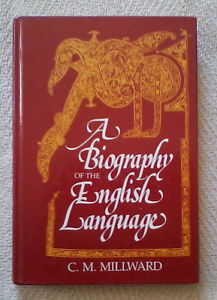
Who:Read this if you are a writer who likes to know what’s built into the words you’re using, what they say about their circumstances as well as what resonances they add for the knowledgeable. Read it if you love the minutiae of language, all the little “who would have thought” and “Although unlikely” facts that get seeded into long and drifty conversations, like the fact that Indo-European had three numbers: singular, plural, and dual.
Why: Read this so you can use words both more efficiently and more artfully. SO you know how the literary tradition you are working for and against, bound inextricably within, has been affected by linguistic change and created its own pressures to change in turn.
When: Read this when going among bores, for it will arm you with facts with which any recitation of X-Files plots or sports trivia can be met. Read this when you want something a little academic, with that cleansing flavor of self-improvement that the scrub of dry details can bring. Read it when you’re cramming for a test that involves volcabulary.
Where and how: Read this sporadically, tucking facts away, or with a notebook in hand. Read it for a class that takes you through centuries of linguistic change, showing you how history is tucked into every Vocabulary lesson.
#sfwapro
...
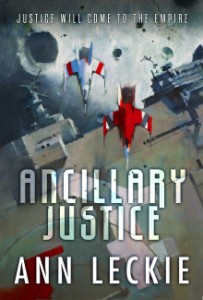
What: Ancillary Justice by Ann Leckie is a fabulous space opera with an unusual protagonist whose struggle will pull the reader in. It is, alas, not a particularly long book, and I could have read at least twice more the length happily.
Who: read this if you like space opera or action-filled but character driven SF. Read it if you want to hear the latest in the ongoing conversation about gendered pronouns held between SF writers for decades now. Read it for the sake of enjoyment and rejoice to know it’s the first of three.

Why: Read this because it will be appearing on many of the awards ballots this year and rightly so. Read it so you know why you’re voting for it. Read it because it does new and interesting things. Read it because it’s good.
Where/how: This is ideal for a while-away-some-hours situation, depending on your reading speed. Leckie’s world is immersive, intelligent, and interesting.
...
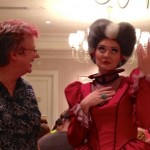
Stuff I posted on the blog:
I announced I am running for SFWA Vice President. #sfwapro is a tag you’ll be seeing on posts intended to appear on the @sfwaauthors feed as well.
The Women Destroying SF Kickstarter will sponsor my destroying Fantasy if they hit a $35k stretch goal.
I talked about my January writing news and provided a teaser from a still-untitled steampunk piece
Stuff for Writers:
In the new You Should Read This series, I read:

Time Wasters!
Interesting Social Media Links:
...
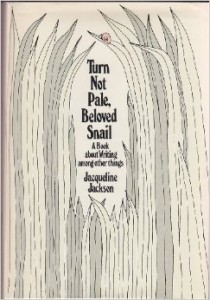
What: Turn Not Pale, Beloved Snail is a writing book aimed at children. Jackson is an experienced YA adult writer, but this is less about writing for children than it is about being a kid who likes to write.
Who: While this is a great book for the nascent writer in your family, any writer will benefit from Jackson’s insight into what hooks a reader as well as her examinations of her own work.
Why: This book is full of joy in writing, a spirit so strong it can’t help but inform your own.
When: Read this with your kids if they’re thinking about writing. Or read it if you’re thinking about writing something aimed at kids and want to remind yourself what the reading experience is like for them.
Where and how: Read with a pen in hand, if only to jot down the many fiction recommendations Jackson makes (or if you forget, they’re all collected in an appendix.) It’s a reading list that shaped my own middle-grade reading, leading me to L.M. Boston and Tove Jansson, among others. Try the exercises as you go.
...
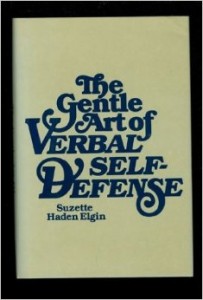
What: The Gentle Art of Verbal Self-Defense helps identify sneaky verbal attacks like back-handed compliments, insults disguised as jokes, and other jabs, as well as providing tactics for dealing with each other.
Who: Read this if you’ve ever felt bullied and didn’t know exactly why. Or if you’ve ever been accused of bullying someone in communication.
Why: Even if you feel totally in command of conversations, this book will help you write better dialogue by showing many of the constructions bullies use, as well as a better understanding of verbal interactions overall.
When: Read this when you’re at your wits end in dealing with a friend, colleague, or anyone else.
Where and how: Keep it handy for frequent reading. If you don’t understand what all the fuss is about, try working through the exercises.
...
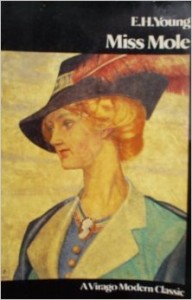
What: Miss Mole is a novel that won the James Tait Black Memorial Prize in 1930. It is set in Radstowe and is, in many ways, a small town novel of manners.
Who: Read this if you love absorbing fiction that deals with small things: not wars or aliens or other monumental matters, but rather cases of crewel yarn gone astray or a pilfered mattress. Read this for characters that come alive and are exemplary of characters who are lovable while still shown with all their flaws.
When: Read this when you want an engrossing read, but also when you want to see the interior life and thoughts of a character conveyed in the most engaging way possible.
Why: Read it because Miss Mole is a heroine outside the norm, because she doesn’t care (or does she) what society says, and because she faces the consequences of past actions with bravery and good spirits.
Where and how: Read this on a rainy day, when you want a love story that is gentle and understated, on a day when you hear the characters’ murmuring in the sound of the falling rain.
...

What: The Forest of Forever, by Thomas Burnett Swann, was originally published in 1971. Many of Swann’s slim little volumes appeared during that decade, lovely retellings of Greco-Roman myths and alternate histories full of mythological creatures. Dryads, centaurs, minotaurs, and fauns fill the pages. Swann depicted same-sex relationships as a matter of fact in a way that nowadays seems well ahead of his time.
Who: If you love gentle fantasy, this is a splendid entrance into Swann’s world. Particularly for those who love mythological creatures, you’ll find a full cast, including some magical creatures invented by Swann.
When: Read this when you’re a little down. You may well find that Swann becomes one of your comfort reads. It’s not a thick fantasy by any means, (my copy is 155 pages) but if you finish it too fast, there’s a sequel to Forest of Forever, Day of the Minotaur.
Why: Read Swann for an interesting take on fantasy. I’ve always thought that his world would be a fabulous one in which to set a role-playing game. Also read him to see same-sex relationships worked in seamlessly, without the “OMG look how socially conscious I am” flavor that sometimes intrudes.
Where and how: Curl up in a corner for this one, with a mug of some pleasantly flowery tea. Be aware the time will pass all too quickly. Be aware there’s plenty more Swann out there, though you may have to hunt for some of the rarer titles.
...
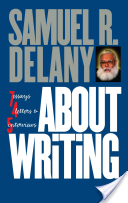
What: About Writing, by Samuel R. Delany, is a book of writing advice that includes seven essays, four letters, and five interviews. Two essays are ones I go back to over and over again, “Thickening the Plot,” and “Characters.”
Who: People who will enjoy this book include all manner of writers, as well as anyone interested in Delany’s own awesome fiction.
When: You should read this when you’re feeling uninspired about your own writing or if you want some assurance that “writing to discover” is as valid an approach as plotting things out thoroughly.
Why: Delany is one of the foremost SF writers of our time. His work speaks not just to those beginning to write, but those well along their path. If, like me, you love his fiction, you’ll find About Writing sheds new light on those works.
Where and how: Read it someplace quiet, where you have space to stare off into the distance, thinking about what Delany has said. Read it straight through or else do what I do and dip in at various places. No matter what angle your approach takes, it’ll be rewarding.
...
Want access to a lively community of writers and readers, free writing classes, co-working sessions, special speakers, weekly writing games, random pictures and MORE for as little as $2? Check out Cat’s Patreon campaign.

"(On the writing F&SF workshop) Wanted to crow and say thanks: the first story I wrote after taking your class was my very first sale. Coincidence? nah….thanks so much."